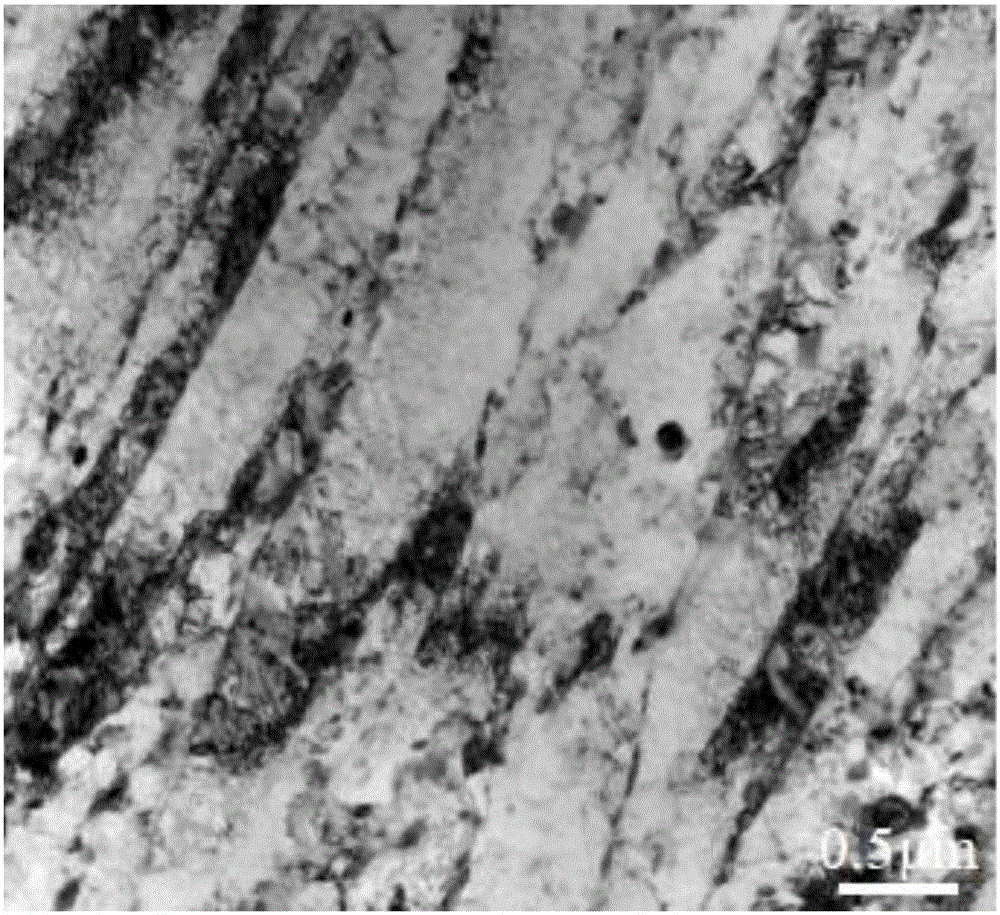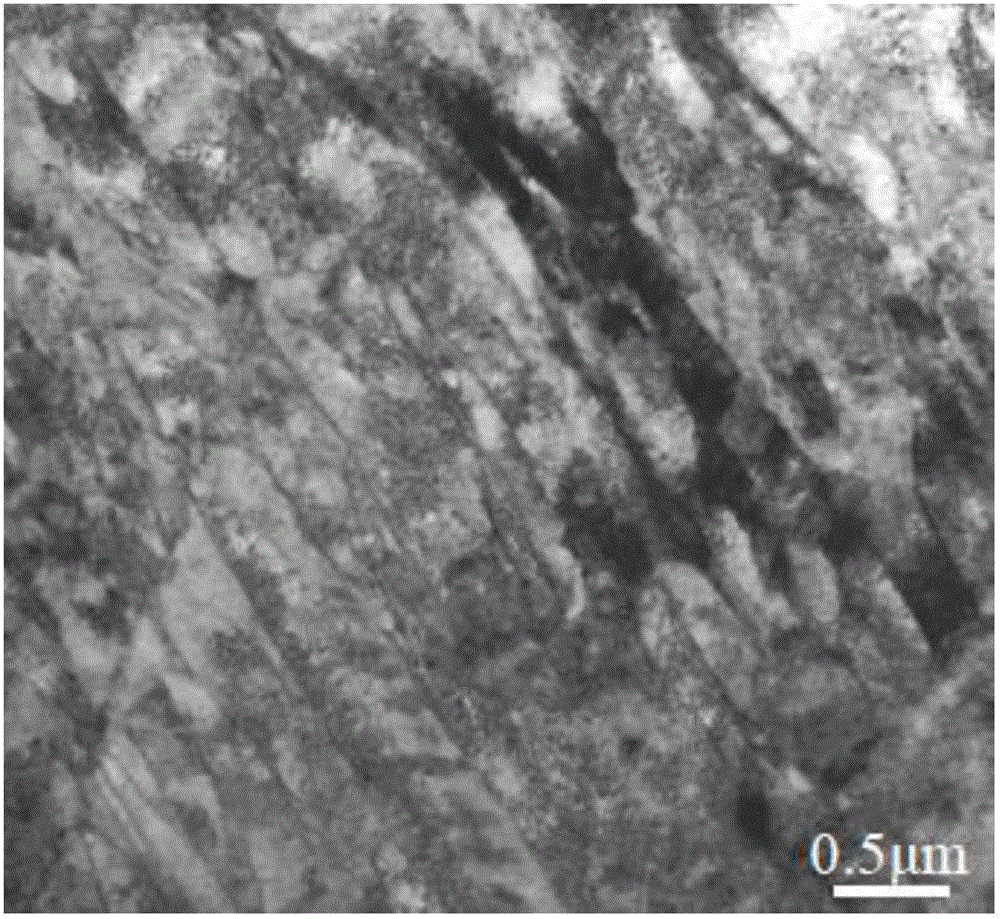Technological method for improving high temperature creep resistant property of heat-resistant 403Nb blade steel
A process method and high-temperature creep technology, applied in the field of metallurgical materials, can solve the problems of no steel type, weakened dislocation and sub-grain pinning effects, etc., and achieve good strong-plastic coordination, improved high-temperature mechanical properties, and high resistance to high-temperature creep. The effect of changing performance
- Summary
- Abstract
- Description
- Claims
- Application Information
AI Technical Summary
Problems solved by technology
Method used
Image
Examples
Embodiment 1
[0050] The 403Nb heat-resistant blade steel ingot used in this embodiment is a bar with a diameter of 40 mm and a length of 100 mm.
[0051] A process for improving the high-temperature creep performance of 403Nb heat-resistant blade steel is carried out according to the following steps:
[0052] Step 1, two-stage heating for temperature homogenization:
[0053] (1) Cast 403Nb heat-resistant blade steel ingots, place them in a heating furnace, heat them to 800°C, and keep them warm for 2 hours;
[0054] (2) Cast 403Nb heat-resistant blade steel into an ingot, raise the temperature to 1200°C, and keep it warm for 5 minutes;
[0055] Step 2, preliminary thermal deformation treatment:
[0056] (1) Cast 403Nb heat-resistant blade steel ingots and place them in a rolling mill for preliminary thermal deformation: the deformation temperature is 1150°C, and the cumulative deformation rate is not less than 50%;
[0057] (2) air-cooling the 403Nb heat-resistant blade steel ingot to r...
Embodiment 2
[0066] The 403Nb heat-resistant blade steel ingot used in this embodiment is a bar with a diameter of 40 mm and a length of 100 mm.
[0067] A process for improving the high-temperature creep performance of 403Nb heat-resistant blade steel is carried out according to the following steps:
[0068] Step 1, two-stage heating for temperature homogenization:
[0069] (1) Cast 403Nb heat-resistant blade steel ingot, place it in a heating furnace, heat it to 900°C, and keep it warm for 1h;
[0070] (2) Cast 403Nb heat-resistant blade steel into an ingot, raise the temperature to 1150°C, and keep it warm for 5 minutes;
[0071] Step 2, preliminary thermal deformation treatment:
[0072] (1) Cast 403Nb heat-resistant blade steel ingots and place them in a rolling mill for preliminary thermal deformation: the deformation temperature is 1050°C, and the cumulative deformation rate is not less than 50%;
[0073] (2) air-cooling the 403Nb heat-resistant blade steel ingot to room temperat...
Embodiment 3
[0080] The 403Nb heat-resistant blade steel ingot used in this embodiment is a bar with a diameter of 60 mm and a length of 80 mm.
[0081] A process for improving the high-temperature creep performance of 403Nb heat-resistant blade steel is carried out according to the following steps:
[0082] Step 1, two-stage heating for temperature homogenization:
[0083] (1) Cast 403Nb heat-resistant blade steel ingot, place it in a heating furnace, heat it to 850°C, and keep it warm for 1.5h;
[0084] (2) Cast 403Nb heat-resistant blade steel into an ingot, raise the temperature to 1200°C, and keep it warm for 8 minutes;
[0085] Step 2, preliminary thermal deformation treatment:
[0086] (1) Cast 403Nb heat-resistant blade steel ingots and place them in a rolling mill for preliminary thermal deformation: the deformation temperature is 1000°C, and the cumulative deformation rate is not less than 50%;
[0087] (2) air-cooling the 403Nb heat-resistant blade steel ingot to room tempera...
PUM
 Login to View More
Login to View More Abstract
Description
Claims
Application Information
 Login to View More
Login to View More - R&D
- Intellectual Property
- Life Sciences
- Materials
- Tech Scout
- Unparalleled Data Quality
- Higher Quality Content
- 60% Fewer Hallucinations
Browse by: Latest US Patents, China's latest patents, Technical Efficacy Thesaurus, Application Domain, Technology Topic, Popular Technical Reports.
© 2025 PatSnap. All rights reserved.Legal|Privacy policy|Modern Slavery Act Transparency Statement|Sitemap|About US| Contact US: help@patsnap.com



